This post may contain affiliate links. For more information, read my disclosure policy.
Worried about kids losing math skills while off school? Get your kids to cook and bake with you in the kitchen and use it as a teaching tool. Baking is full of important math skills and with these easy ideas you can incorporate learning into cookies and cake!
From fractions to conversions, shapes, telling time, doubling a recipe and more, these easy math ideas through baking are great for ALL ages!
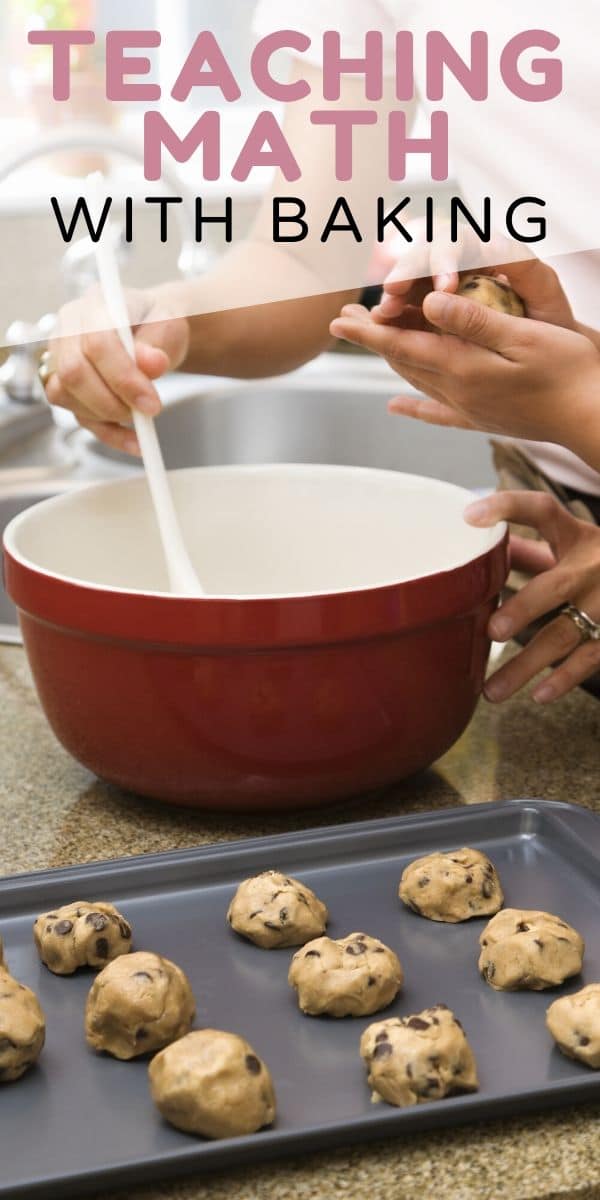
When I was a teacher (and even as a parent) I constantly hear(d) Why do I need this? and When am I ever going to use this? in relationship to math. And I get it; you may not ever solve an equation for X and Y after you take algebra, but you will use basic math skills for the rest of your life.
One of the ways you use math every day is in the kitchen. Reading recipes and baking and cooking are full of important math concepts. If you’re baking with your kids then you can also use it as a math lesson (and science and reading!) for kids of all ages.
This post is going to tell you several of the ways that math is used in baking so that you can use the ideas to help your kids keep learning, even if they’re on break. Don’t let those math skills get lost in the summer slump (or the “social distancing slump”).
Table of Contents
Teaching about colors and shapes
For young children, getting them in the kitchen to bake or cook with you is about identifying colors and shapes. You can point out:
- The shapes of baked goods (cookies are circles, brownies are squares, etc)
- The shapes of objects (oranges are spheres, a box of crackers is a rectangular prism)
- How to turn one shape into another (i.e. cutting a square brownie into triangles)
- Teach color and dimension (2D vs 3D)
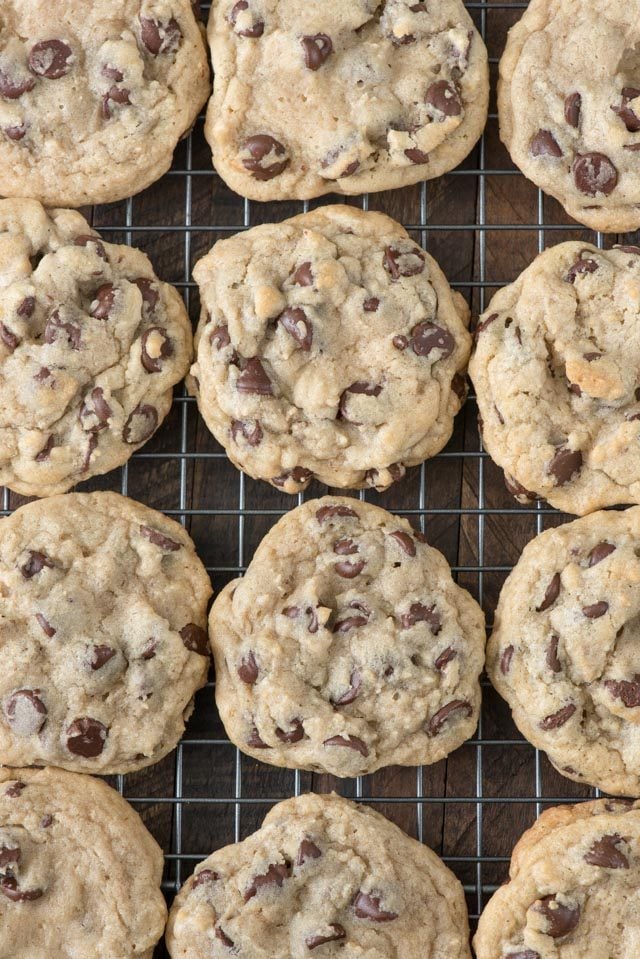
Teaching early counting
Also for young children, you can start them counting by getting them in the kitchen. Ways you can do this:
- Counting the number of cookies in a batch
- Counting the number of ingredients needed for a recipe
- Counting the number of marshmallows in a cup (when making Krispie Treats) or the number of graham crackers in a pie crust, etc.
Weights and Measuring
A large part of baking is measuring out ingredients; baking is a science and things need to be exact. While you might throw a pinch of this and a bit of that into a pot when making sauce, you need exact measurements for baking.
A child’s age will determine what sorts of weighing and measuring you can teach, but it’s never to early to get them in the kitchen and introducing them to the idea. As they get older, you can move onto conversions, etc.
- For pre-school and younger, get the kids used to using the measuring spoons and cups. If you’re using a scale, you can talk to them about ounces vs pounds and have them learn the numbers.
- For early elementary school, you can start talking measurement and weights in simple terms, and estimating weights of ingredients, and talking about which measurement is appropriate (i.e. would I use ounces or pounds to measure a bag of flour or if I’m measuring out vanilla extract should I use cups or teaspoons).
- Upper Elementary School: Starting in about 4th grade, kids are learning about metric conversions, comparing them, adding/subtracting them, reading recipes, converting one measurement to another. Apply this to the kitchen by talking about conversions of teaspoons to tablespoons, etc., as well as doubling recipes (more on that below) and converting from metric to U.S. measurements. This is also a good time to talk about °F vs °C, converting between them, and discussing measuring differences between cups and ounces/grams/mL (have different people measure 1/2 cup flour and weight each of them – are they the same or different? Why?)
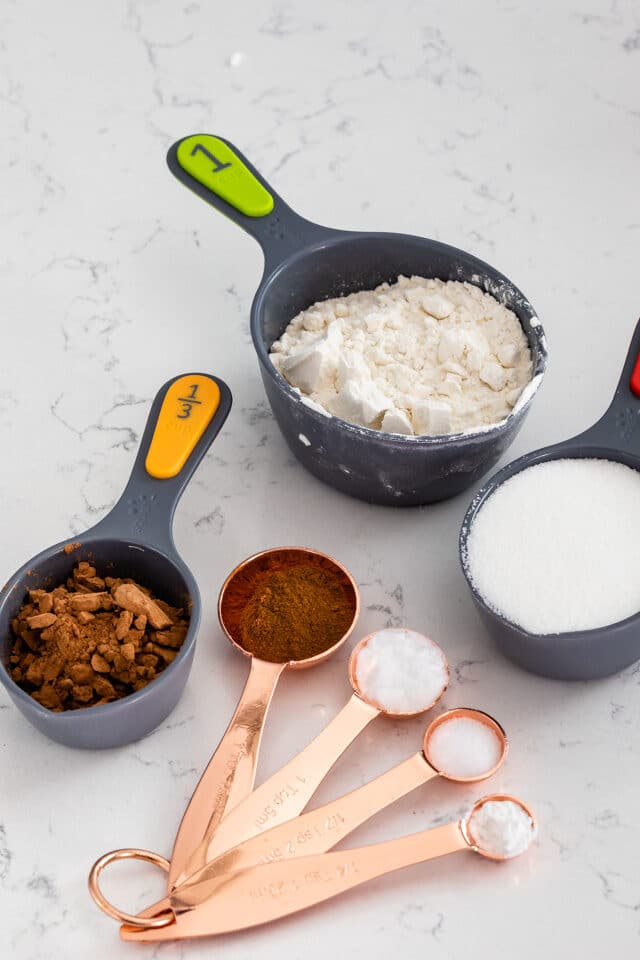
Time
Measuring time is an important part of baking – you don’t want to over bake cookies! From the time kids learn how to tell time, they can be reinforcing it in the kitchen.
- For pre-school, start them on telling time, comparing clocks, and counting backwards (using the timer on the oven).
- For early elementary school kids, they are learning reading clocks, so you can reinforce telling time and change in time (i.e. it’s 1:30 now and the cookies will be done in 10 minutes, what time will it be?)
- Upper elementary school: talk about stop and start times, calculating times, and changes in times (i.e. if this cake takes 70 minutes to bake and 2 hours to cool what time should I put it in the oven by if I have to leave the house at 5:00?)
Fractions
Fractions are a HUGE part of baking: all the measurements in the U.S. deal with cups and teaspoons in fractions. From just choosing the right measuring cup to comparing the sizes and then later, doubling and converting, fractions are a huge part of math AND baking.
- Pre-school: talk about fractions of ingredients (i.e. break up a baking chocolate bar and talk about simple fractions), compare sizes of measuring spoons and cups.
- Early elementary school: more about fractions of ingredients, equal parts (using the same baking chocolate example), explaining fractions in terms of cup and teaspoon measurements and how they relate to each other, and comparing fractions (compare 1/2 cup and 3/4 cup of chocolate chips).
- Upper elementary school: this is when they are all in with fractions (converting to decimals, adding, subtracting, multiplying and dividing). Some ideas include: doubling or halving recipes (see below), converting fractions of ingredients to decimals (the recipe calls for 2 1/3 cup flour, how much is that in a decimal), comparing fractions of ingredients between recipes (i.e. the chocolate chip cookie recipe has 1/2 cup brown sugar but the oatmeal cookie recipe has a full cup), etc.
Doubling Recipes
It’s really easy to double most recipes, and most recipes work ok when doubled. Cookies, bars/brownies and cupcakes are the easiest things to double, but you can double almost any recipe with success (baking time is sometimes affected).
Math concepts kids can learn when doubling a recipe:
- Doubling fractions and reducing them to measurable ingredients (i.e. doubling 2 tablespoons makes 4, which is 1/4 cup).
- Doubling fractions can be done by adding fractions or multiplying by 2, depending on what your child is learning in school.
- If you’re doubling a bar, brownie, cake or quick bread recipe, you can change the pan size. Pan size is all about volume, and different pan sizes have different volumes. See all about pan size equivalences here.
- Converting fractions (if you double 3/4 cup by adding fractions you get 6/4, which you must convert to 1 1/2 to measure it out)
- Reducing fractions (if you double 1/4 you get 2/4 which must be reduced to 1/2 so you can measure it using a measuring cup)
Halving a Recipe
Cutting a recipe in half is harder than doubling, because some ingredients can’d be halved (like eggs). When cutting a recipe in half, look for one that has an even number of eggs so that it will divide easily.
What kids can learn about math from halving a recipe:
- Dividing fractions
- Changing the pan size ( Pan size is all about volume, and different pan sizes have different volumes. See all about pan size equivalences here.)
- Converting and reducing fractions
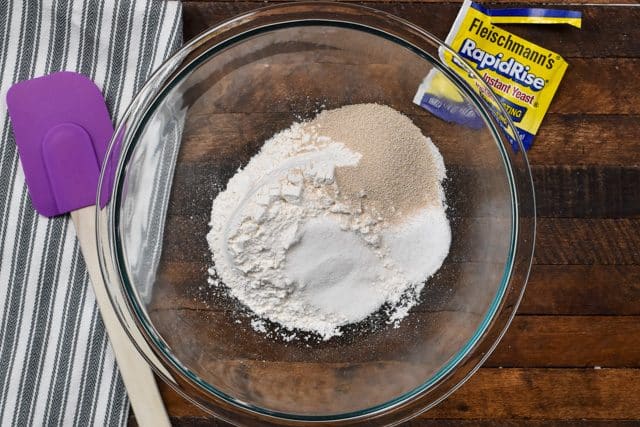
Learning Science and Reading When Baking
Math isn’t the only thing kids will learn when baking and cooking. There are opportunities for science and reading as well!
- Reading comes into play when just reading a recipe. It’s important to read the recipe before starting cooking, and there are nuances to recipes that mean different things, which is an important thing to learn (not just about recipes!) Learn about how to read a recipe.
- There is so much science in baking, too much for me to even detail, but two main things come to mind: baking soda and yeast. Teaching a child about leavening a recipe with baking soda (watch it interact with vinegar in my mom’s banana bread recipe) can teach them about scientific reactions, as can baking with yeast. Make my ultimate pizza crust two ways: once with active dry and once with instant yeast to see the difference.
- Learn about baking soda vs. baking powder and about cream of tartar, which all have to do with science.
- Learn more about the science of baking here.
Be sure to check out my best recipes for baking with kids!
Have you made this recipe?
Tag @crazyforcrust on Instagram or hashtag it #crazyforcrust
Leave a comment below with more ideas!
Last Updated on March 6, 2021
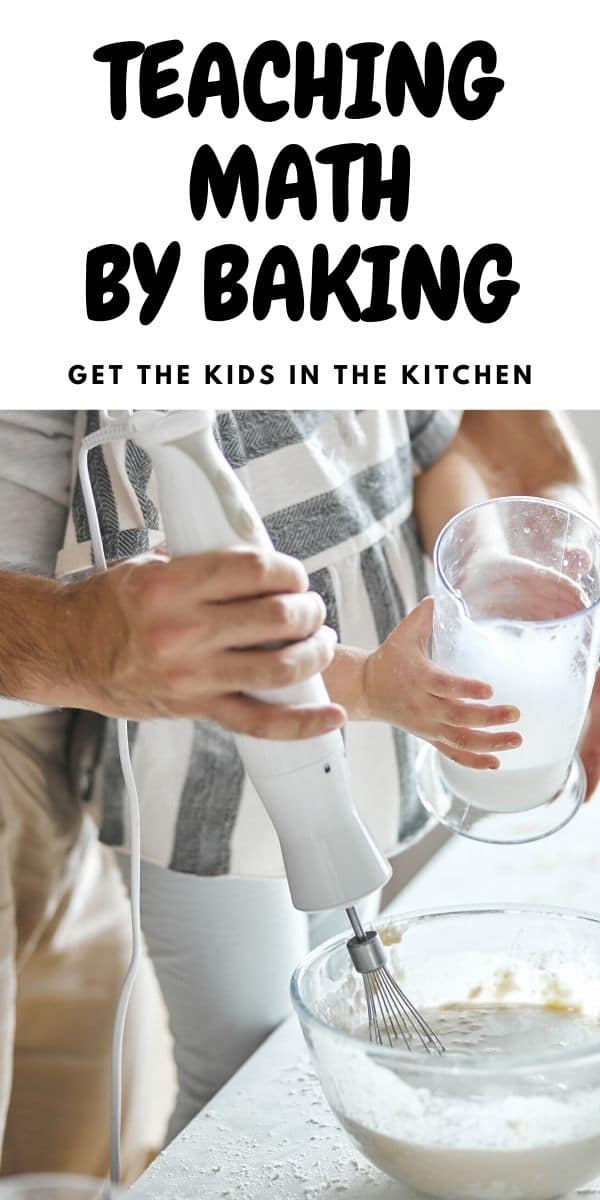
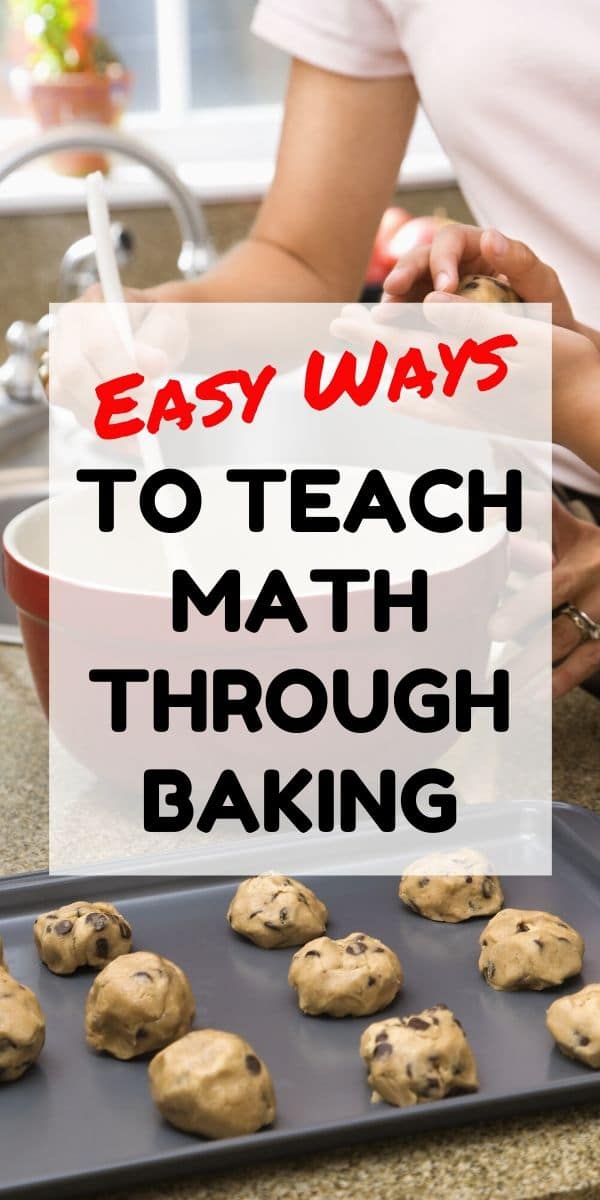
Science and cooking are hand in hand. You can use cooking as a way of discussing food miles, food banks and nutrition. You can even find all out about why all cakes are meant to rise and why using yeast is important.